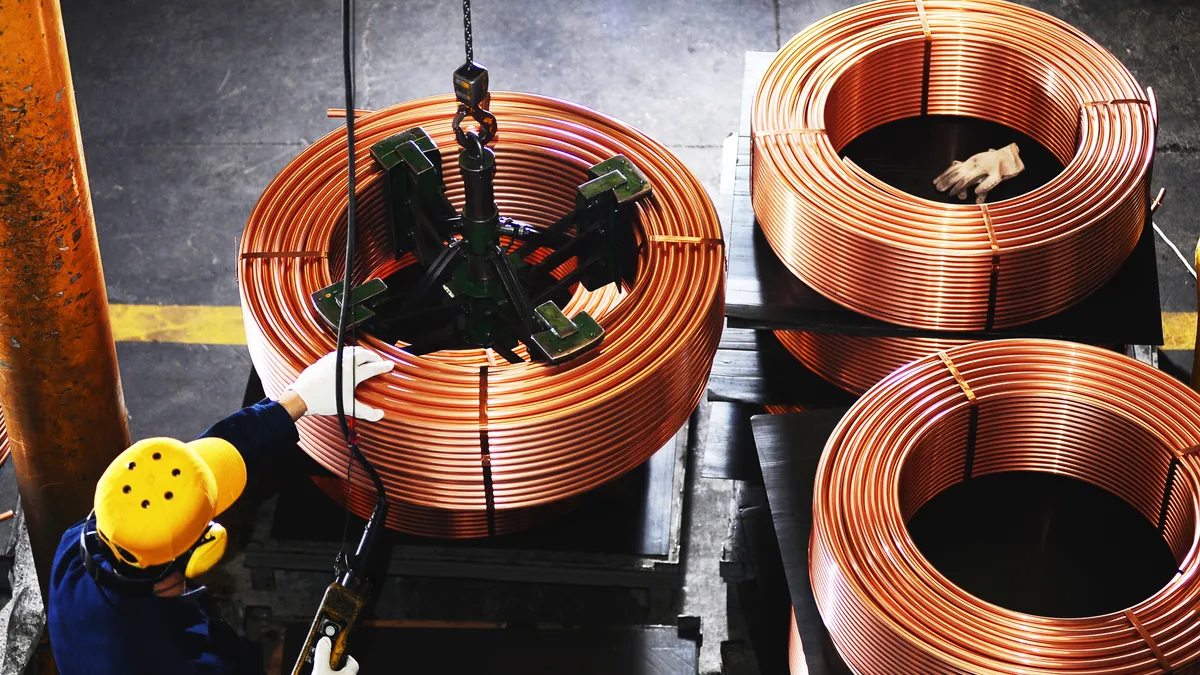Dive Brief:
-
Growing demand for copper from key parts of the energy transition — electric vehicles, solar and wind equipment, and power lines — will likely outstrip supply later this decade, potentially putting the goal of net zero carbon emissions in 2050 out of reach, according to S&P Global analysts.
-
The energy transition will help drive the total global demand for copper to about 50 million metric tons a year by 2035 from about 25 mmt today, the analysts said in a report released Thursday.
-
However, even assuming record levels of mining and recycling, there won’t be enough copper to meet that demand, Daniel Yergin, S&P Global vice chairman, said during a presentation on the study. “This study is a wake-up call,” he said.
Dive Insight:
Copper is the “essential metal” for the energy transition because of its pervasive use in various technologies such as EVs and EV chargers, according to Yergin.
S&P expects copper demand from segments in the energy transition will jump to about 21 mmt by 2035, up from about 8 mmt today, with EVs, EV charging equipment and a buildout of the transmission and distribution system driving the growth, according to Olivier Beaufils, associate director, Americas Consulting, S&P Global Commodity Insights.
Light-duty EVs, for example, contains about 2.5 times more copper than their gasoline-fueled counterparts, he said.
“The 2050 climate objectives will not be achieved without a significant ramp-up in copper production in the near and medium term, which will be very challenging,” analysts said in the report.
The United States imports about half its copper, but S&P expects imports to climb to 57% to 67% of its demand by 2035.
The U.S. and other countries won’t simply be able to build more mines to meet the growing demand for copper, according to the S&P analysts. On average it takes about 16 years to develop a copper mine, Yergin said, citing the International Energy Agency.
“Absent a major policy shift, however, regulatory, permitting, and legal challenges, combined with long timelines for new mines to come onstream, will continue to dampen the pace of supply increases,” the analysts said in the report.
The challenge to increasing copper supplies will be compounded by increasingly complex geopolitical and country-level operating environments, including the strategic rivalry between the United States and China, the analysts said.
Technology and policy innovations will be needed to cut the copper supply-demand gap, according to the report. That will require partnerships among governments, producers and end users, the analysts said.
They called for more study on three key areas, including technology innovations to enable cleaner mining and refining of copper, partly to reduce the carbon footprint of the copper industry and to make it easier to get permits for new production, according to the report.
They also urged clearer and more stable policies around permitting timelines and investment as well as a better understanding of the need for other critical minerals.
Last month, the United States, nine other countries and the European Commission formed the Minerals Security Partnership to bolster “critical mineral” supply chains, partly to fortify access to key minerals needed for clean energy technologies, according to the U.S. State Department.














